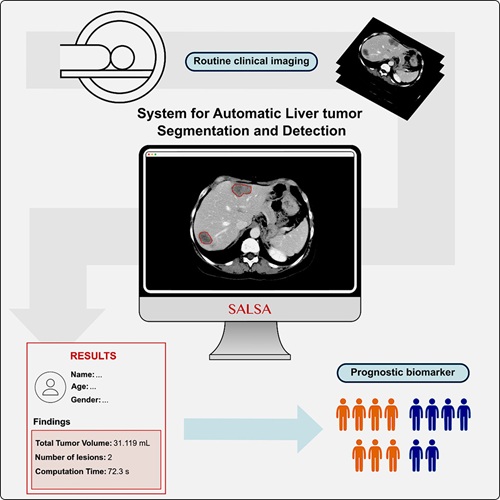Real-Time, Interactive Fully 3D Quantitative Platform Developed for Disease-Centralized Patient Coordination and Management
|
By MedImaging International staff writers Posted on 04 Dec 2012 |
An enhanced platform tackles the challenge of optimizing imaging’s potential in coordinating an optimal workflow along the cycle of patient care, including radiologists, interventional radiologists, surgeons, and oncologists. The decision support provided by the technology covers a full range of disease-centralized patient management in the thoracic and abdominal areas, from detection, diagnosis, pretreatment planning, to intraoperative navigation, and post-treatment follow up.
EDDA Technology (Princeton, NJ, USA) demonstrated the real-time interactive fully three-dimensional (3D) quantitative imaging in an enhanced IQQA Platform at the 98th scientific assembly and annual meeting of the Radiological Society of North America (RSNA), held November 25-30, 2012, in Chicago (IL, USA).
A feature of the platform, IQQA-Liver for 3D real-time quantitative planning and assessment, is currently used by radiologists and surgeons worldwide in liver surgery, transplantation, and interventional centers. Increased care and considerable timesavings were shown in over 4,000 cases using IQQA-Liver in hospitals since the first commercial system installation in Q2 2009.
Real-time interactive applications with fully 3D capabilities are the prerequisite of strong clinical decision support from imaging. The same proprietary technology behind IQQA-Liver has now been extended to other organs in thoracic and abdominal application areas; to offer physicians real-time quantitative decision support that goes further than the 3D visualization domain. It enables physicians to utilize the quantitative organ data, vessels, lesions, and ducts, as well as the quantified spatial relationships among these anatomies of interests, to make their own customized conclusions based upon own knowledge and experience in a user-friendly, real-time interactive way, thereby improving patient care, and effectiveness.
IQQA-Guide (a work-in-progress) additionally brings the real-time interactive quantitative technology into the operating room by offering real-time 3D image guidance for abdominal and thoracic biopsy, interventional procedure, and surgery. IQQA-Guide utilizes a 3D map of individualized anatomic representations extracted from multimodality image datasets. Through sophisticated registration algorithms and state-of-the-art electromagnetic tracking, it provides real-time tracking and referencing to anatomic features of interest in 3D. As a result, physicians are supported to visualize beyond the anatomy surface during a procedure, and to quantitatively locate, evaluate, and modify the position of instruments relative to the full patient-specific 3D anatomy of lesion, vessels, organs and segments.
EDDA Technology, Inc. is a clinical computer solution provider in healthcare imaging and analysis. EDDA offers a series of next-generation computer assistance systems to the complete patient care-management cycle, including enabling early detection and diagnosis of diseases, as well as enhancing efficiency and precision in treatment planning, management, and follow-up.
Related Links:
EDDA Technology
EDDA Technology (Princeton, NJ, USA) demonstrated the real-time interactive fully three-dimensional (3D) quantitative imaging in an enhanced IQQA Platform at the 98th scientific assembly and annual meeting of the Radiological Society of North America (RSNA), held November 25-30, 2012, in Chicago (IL, USA).
A feature of the platform, IQQA-Liver for 3D real-time quantitative planning and assessment, is currently used by radiologists and surgeons worldwide in liver surgery, transplantation, and interventional centers. Increased care and considerable timesavings were shown in over 4,000 cases using IQQA-Liver in hospitals since the first commercial system installation in Q2 2009.
Real-time interactive applications with fully 3D capabilities are the prerequisite of strong clinical decision support from imaging. The same proprietary technology behind IQQA-Liver has now been extended to other organs in thoracic and abdominal application areas; to offer physicians real-time quantitative decision support that goes further than the 3D visualization domain. It enables physicians to utilize the quantitative organ data, vessels, lesions, and ducts, as well as the quantified spatial relationships among these anatomies of interests, to make their own customized conclusions based upon own knowledge and experience in a user-friendly, real-time interactive way, thereby improving patient care, and effectiveness.
IQQA-Guide (a work-in-progress) additionally brings the real-time interactive quantitative technology into the operating room by offering real-time 3D image guidance for abdominal and thoracic biopsy, interventional procedure, and surgery. IQQA-Guide utilizes a 3D map of individualized anatomic representations extracted from multimodality image datasets. Through sophisticated registration algorithms and state-of-the-art electromagnetic tracking, it provides real-time tracking and referencing to anatomic features of interest in 3D. As a result, physicians are supported to visualize beyond the anatomy surface during a procedure, and to quantitatively locate, evaluate, and modify the position of instruments relative to the full patient-specific 3D anatomy of lesion, vessels, organs and segments.
EDDA Technology, Inc. is a clinical computer solution provider in healthcare imaging and analysis. EDDA offers a series of next-generation computer assistance systems to the complete patient care-management cycle, including enabling early detection and diagnosis of diseases, as well as enhancing efficiency and precision in treatment planning, management, and follow-up.
Related Links:
EDDA Technology
Latest Imaging IT News
- New Google Cloud Medical Imaging Suite Makes Imaging Healthcare Data More Accessible
- Global AI in Medical Diagnostics Market to Be Driven by Demand for Image Recognition in Radiology
- AI-Based Mammography Triage Software Helps Dramatically Improve Interpretation Process
- Artificial Intelligence (AI) Program Accurately Predicts Lung Cancer Risk from CT Images
- Image Management Platform Streamlines Treatment Plans
- AI-Based Technology for Ultrasound Image Analysis Receives FDA Approval
- AI Technology for Detecting Breast Cancer Receives CE Mark Approval
- Digital Pathology Software Improves Workflow Efficiency
- Patient-Centric Portal Facilitates Direct Imaging Access
- New Workstation Supports Customer-Driven Imaging Workflow
Channels
Radiography
view channel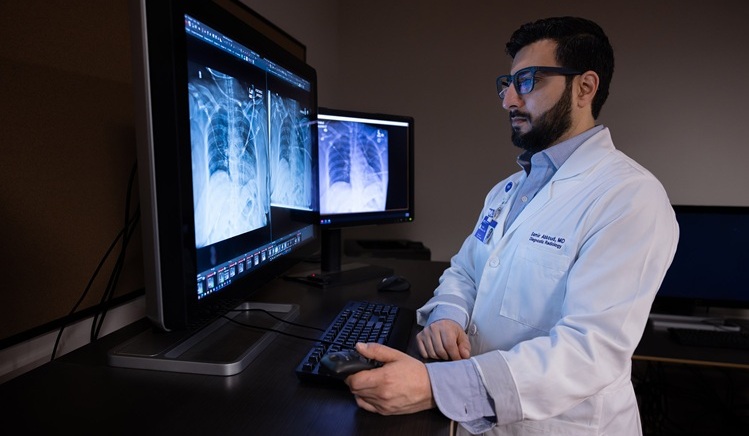
AI Radiology Tool Identifies Life-Threatening Conditions in Milliseconds
Radiology is emerging as one of healthcare’s most pressing bottlenecks. By 2033, the U.S. could face a shortage of up to 42,000 radiologists, even as imaging volumes grow by 5% annually.... Read more
Machine Learning Algorithm Identifies Cardiovascular Risk from Routine Bone Density Scans
A new study published in the Journal of Bone and Mineral Research reveals that an automated machine learning program can predict the risk of cardiovascular events and falls or fractures by analyzing bone... Read more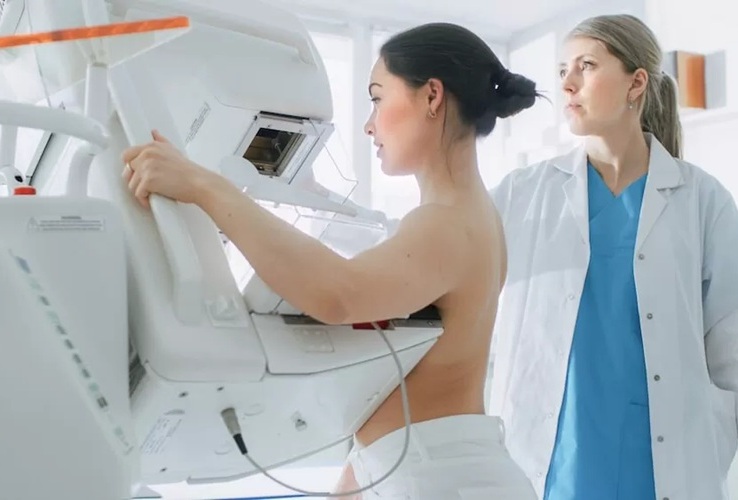
AI Improves Early Detection of Interval Breast Cancers
Interval breast cancers, which occur between routine screenings, are easier to treat when detected earlier. Early detection can reduce the need for aggressive treatments and improve the chances of better outcomes.... Read more
World's Largest Class Single Crystal Diamond Radiation Detector Opens New Possibilities for Diagnostic Imaging
Diamonds possess ideal physical properties for radiation detection, such as exceptional thermal and chemical stability along with a quick response time. Made of carbon with an atomic number of six, diamonds... Read moreMRI
view channel
New MRI Technique Reveals Hidden Heart Issues
Traditional exercise stress tests conducted within an MRI machine require patients to lie flat, a position that artificially improves heart function by increasing stroke volume due to gravity-driven blood... Read more
Shorter MRI Exam Effectively Detects Cancer in Dense Breasts
Women with extremely dense breasts face a higher risk of missed breast cancer diagnoses, as dense glandular and fibrous tissue can obscure tumors on mammograms. While breast MRI is recommended for supplemental... Read moreUltrasound
view channel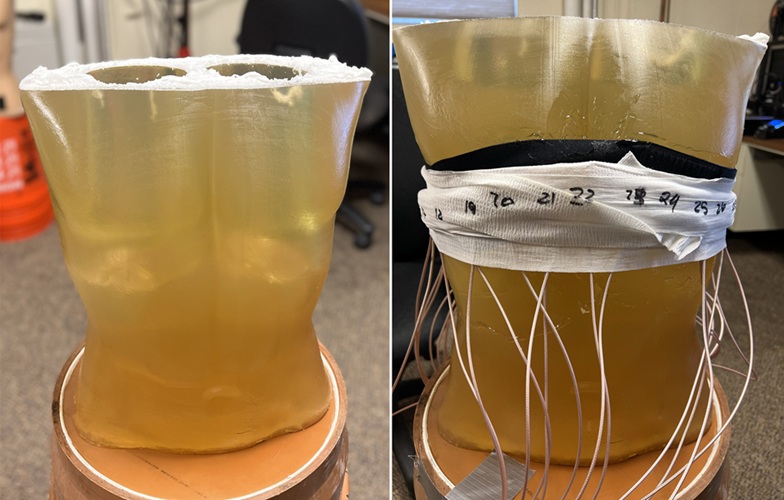
New Medical Ultrasound Imaging Technique Enables ICU Bedside Monitoring
Ultrasound computed tomography (USCT) presents a safer alternative to imaging techniques like X-ray computed tomography (commonly known as CT or “CAT” scans) because it does not produce ionizing radiation.... Read more
New Incision-Free Technique Halts Growth of Debilitating Brain Lesions
Cerebral cavernous malformations (CCMs), also known as cavernomas, are abnormal clusters of blood vessels that can grow in the brain, spinal cord, or other parts of the body. While most cases remain asymptomatic,... Read moreNuclear Medicine
view channel
New Imaging Approach Could Reduce Need for Biopsies to Monitor Prostate Cancer
Prostate cancer is the second leading cause of cancer-related death among men in the United States. However, the majority of older men diagnosed with prostate cancer have slow-growing, low-risk forms of... Read more
Novel Radiolabeled Antibody Improves Diagnosis and Treatment of Solid Tumors
Interleukin-13 receptor α-2 (IL13Rα2) is a cell surface receptor commonly found in solid tumors such as glioblastoma, melanoma, and breast cancer. It is minimally expressed in normal tissues, making it... Read moreGeneral/Advanced Imaging
view channel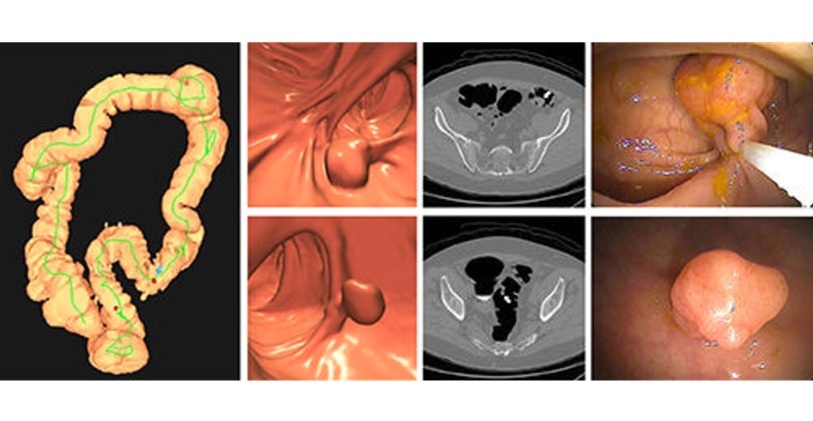
CT Colonography Beats Stool DNA Testing for Colon Cancer Screening
As colorectal cancer remains the second leading cause of cancer-related deaths worldwide, early detection through screening is vital to reduce advanced-stage treatments and associated costs.... Read more
First-Of-Its-Kind Wearable Device Offers Revolutionary Alternative to CT Scans
Currently, patients with conditions such as heart failure, pneumonia, or respiratory distress often require multiple imaging procedures that are intermittent, disruptive, and involve high levels of radiation.... Read more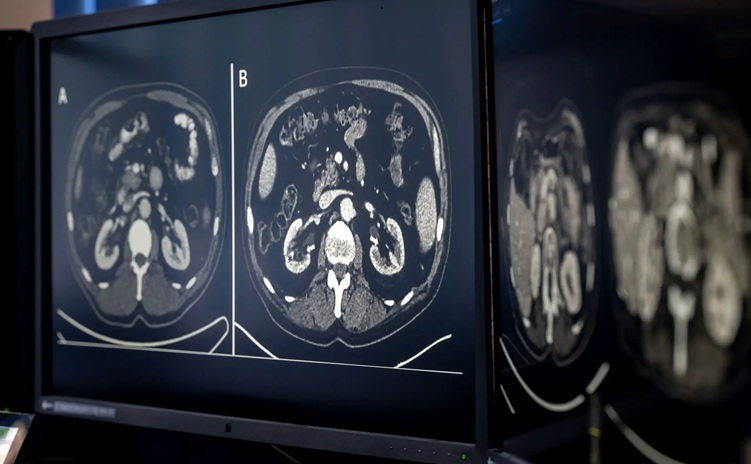
AI-Based CT Scan Analysis Predicts Early-Stage Kidney Damage Due to Cancer Treatments
Radioligand therapy, a form of targeted nuclear medicine, has recently gained attention for its potential in treating specific types of tumors. However, one of the potential side effects of this therapy... Read moreIndustry News
view channel
GE HealthCare and NVIDIA Collaboration to Reimagine Diagnostic Imaging
GE HealthCare (Chicago, IL, USA) has entered into a collaboration with NVIDIA (Santa Clara, CA, USA), expanding the existing relationship between the two companies to focus on pioneering innovation in... Read more
Patient-Specific 3D-Printed Phantoms Transform CT Imaging
New research has highlighted how anatomically precise, patient-specific 3D-printed phantoms are proving to be scalable, cost-effective, and efficient tools in the development of new CT scan algorithms... Read more
Siemens and Sectra Collaborate on Enhancing Radiology Workflows
Siemens Healthineers (Forchheim, Germany) and Sectra (Linköping, Sweden) have entered into a collaboration aimed at enhancing radiologists' diagnostic capabilities and, in turn, improving patient care... Read more














.jpeg)



